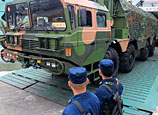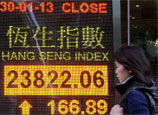
The mine attracted companies from the United States, Japan, South Korea and China to bid for exploration rights in 2011, which are still to be finalized.
Shenhua Group, China's largest coal producer and trader, was given a 40 percent stake in developing the mine in July 2011 by the Mongolian government.
But just two months later, Mongolian President Tsakhia Elbegdorj said the country was rethinking its development plans for the site.
Mongolia's GDP rose 17.3 percent in 2011, and within that year its coal mining industry replaced copper mining to become its major industry, and economic growth engine.
An industrial manufacturing park was built 160 km south of Ganqimaodu in 2003, and was listed as one of the region's key industrial sites in 2011.
Shenhua Group launched a coal processing plant there in 2011, and began manufacturing in September 2012, becoming China's only large-scale coal processing project, wholly dependent on imported resources, said Zhao Lisheng, the deputy manager of Shenhua Bayannur Energy Co Ltd.
Zhao said 2 million tons of coal were transported to his company from Mongolia via Ganqimaodu in 2012, and he expects that to hit 5 million tons this year.
A ton of Mongolian coal sells for 850 yuan to 880 yuan to the company, around 100 yuan lower than domestic coal prices. Most of Zhao's production is sent to Beijing and Tianjin.
According to a recent report by the International Energy Agency, China accounts for about 46.2 percent of global coal consumption, and that is expected to grow to 50 percent by 2014.
Shenhua has built a railway connecting Ganqimaodu and Baotou, the biggest industrial city in Inner Mongolia, and the link is expected to start operating by the end of 2013.
Mongolia also plans a railway from Tavan Tolgoi to the border crossing, with construction due to finish in 2015.
Port authority chief Yuan Yuefeng believes Ganqimaodu has huge potential, given it has capacity for annual transit shipments of 50 million tons, and says it will reach 100 million by the end of 2020, when both road and railway transportation systems are completed.
He expects the port to be more than just an entry for natural resources, too, as more people settle nearby in the town itself, and as it continues to attract more exports, particularly Chinese agricultural produce to Mongolia.
Du Juan in Beijing contributed to this story



















![]()
